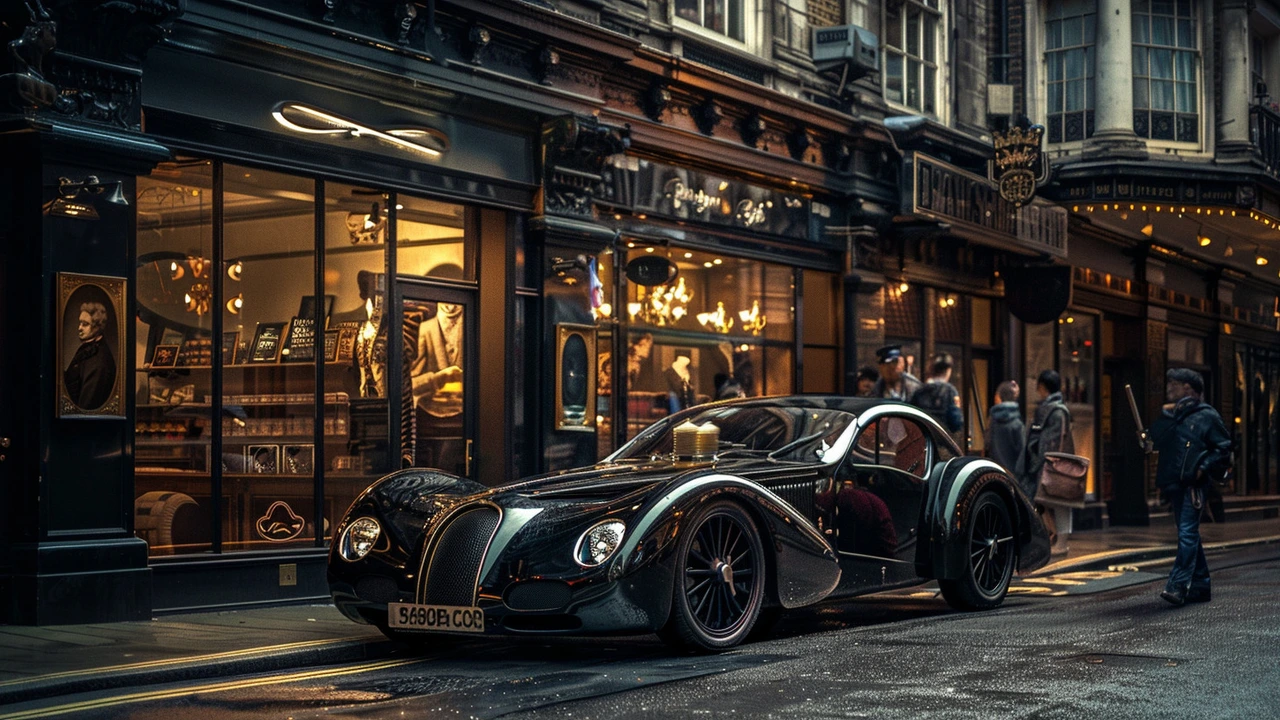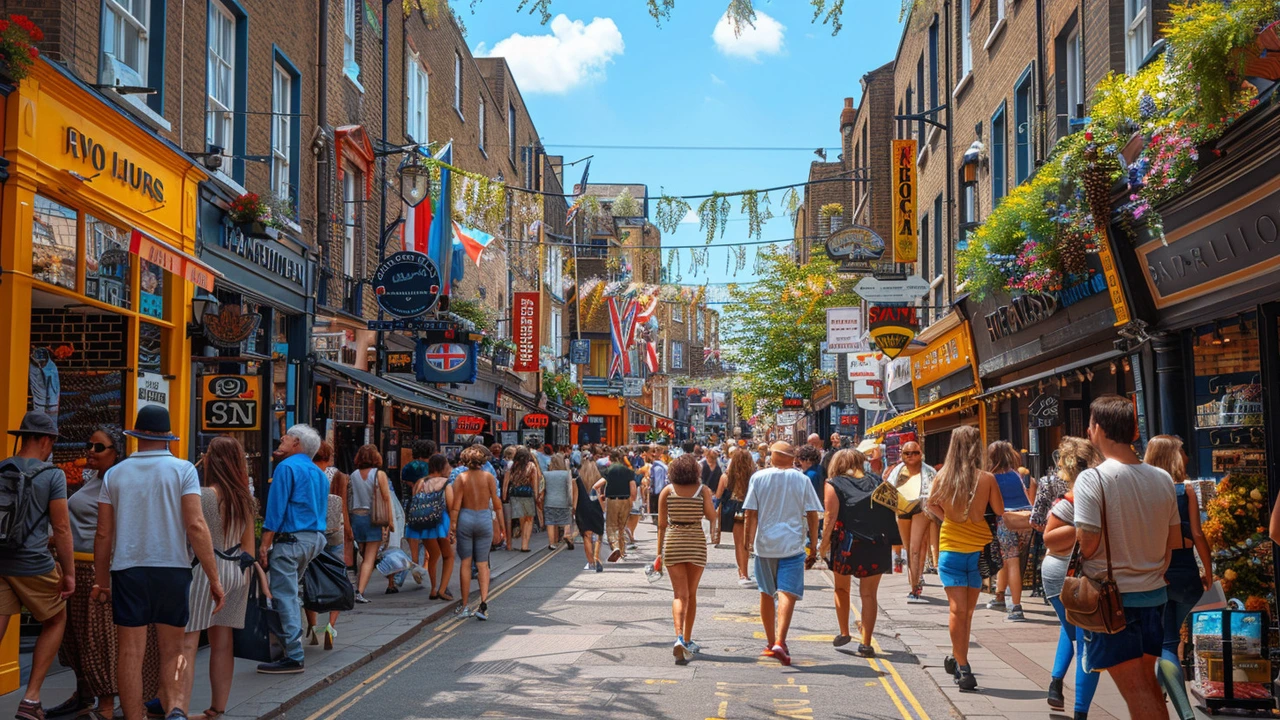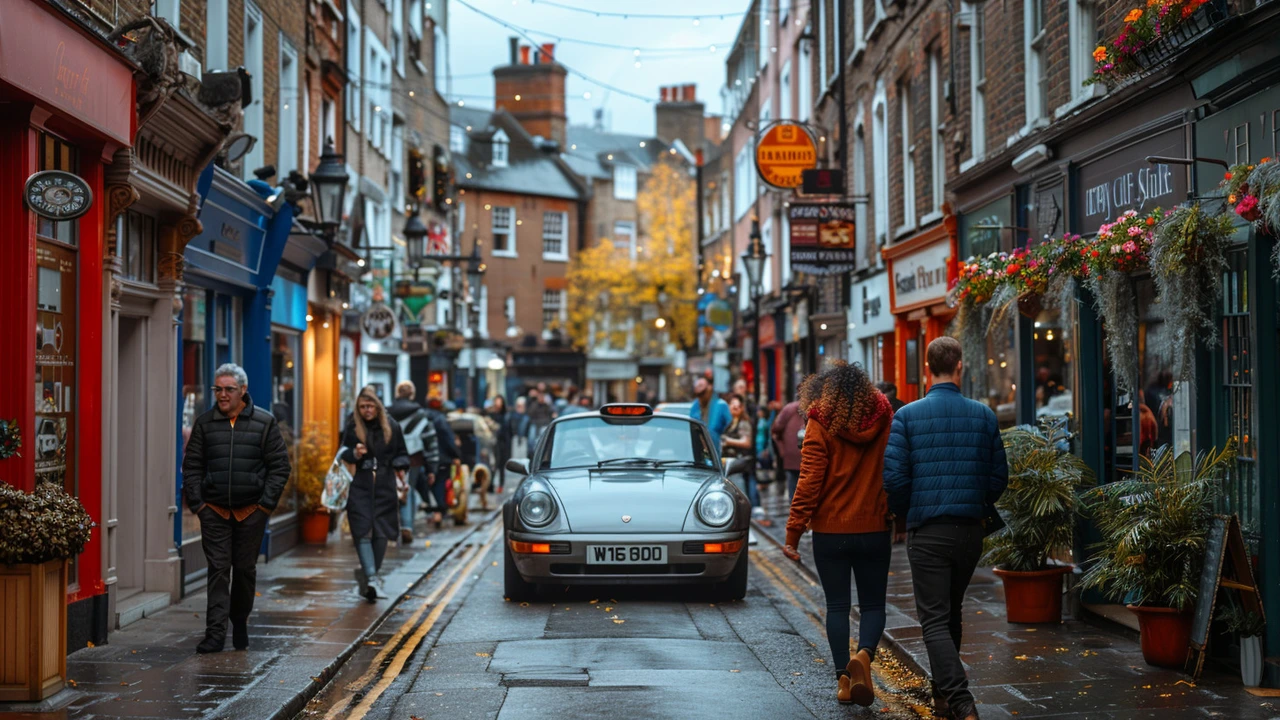Nostalgia often sweeps us off our feet, leading us to yearn for eras that seem simpler and more enchanting. But why do we find comfort in looking back? What's the magic behind revivalism, and how does it manage to blend the charm of the past with the innovation of the present?
Revivalism is more than just a trend; it's a profound cultural phenomenon. Whether it's the resurgence of vinyl records, vintage fashion, classic car shows, or retro home decor, the revival of past eras connects us to a time that feels more authentic and comforting. This isn't just about aesthetics; it's about the stories, emotions, and memories tied to those times.
By diving into popular revival trends and understanding what makes them so appealing, we can uncover the heart of human desire to relive the past. And by incorporating elements of these trends into our daily lives, we create a bridge between the yesterday and today, enriching our lives with the best of both worlds.
- Understanding Revivalism
- Popular Revival Trends
- The Magic of Nostalgia
- Incorporating Revivalism into Modern Life
Understanding Revivalism
Revivalism is a fascinating cultural movement that seeks to bring elements from the past back into the present. This movement goes beyond mere nostalgia; it's about revaluing and revitalizing historical styles, traditions, and practices. One key aspect of revivalism is its ability to evoke a sense of familiarity and comfort, making people feel connected to a time when life seemed different.
The roots of revivalism can be traced back to the 19th century when the Gothic Revival in architecture gained popularity. This movement aimed to revive medieval Gothic architectural styles, emphasizing grandeur and ornamentation. Today, revivalism spans a variety of fields, such as fashion, music, and even technology. It's about taking the best of the past and giving it a contemporary twist, thus creating something that feels both old and new.
Nostalgia plays a crucial role in the appeal of revivalism. Studies have shown that nostalgia can have positive effects on our mental health, providing comfort and reducing stress. According to Dr. Constantine Sedikides, a psychologist at the University of Southampton, "Nostalgia is like a psychological immune response that helps us deal with existential threats."
Revivalism also feeds into the human desire for authenticity in an increasingly digital and fast-paced world. People yearn for tangible connections to the past, whether it's through listening to vinyl records, wearing vintage clothing, or restoring classic cars. These acts of revival help to preserve cultural heritage and offer a tactile experience that's often missing in modern life.
Another interesting aspect is how different generations engage with revivalism. For instance, millennials and Gen Z have shown a strong interest in vintage fashion and retro technology. They often seek authenticity and sustainability in their consumption habits, which aligns with revivalist trends. On the other hand, older generations may engage in revivalism as a way to relive memories and pass down traditions.
In the realm of interior design, revivalism manifests through the use of retro furniture, antique decor, and period-specific color schemes. This trend allows homeowners to create spaces that tell a story and evoke a sense of history. The key to successful revivalist design is to blend old and new elements harmoniously, ensuring that the space feels inviting rather than outdated.
To delve deeper into this topic, it's worth exploring how the internet has fueled the revivalism movement. Online platforms like Instagram and Pinterest serve as virtual time capsules, offering a plethora of ideas and inspiration. These platforms not only facilitate the spread of revivalist trends but also help build communities of like-minded individuals who share a passion for the past.
"Revivalism is about honoring the past while simultaneously crafting a vision for the future," says Christopher Wilkins, a historian and cultural critic. This perspective underscores the dynamic nature of revivalism, where the past and present coexist in a meaningful dialogue.
Ultimately, understanding revivalism requires a deep appreciation for history and a recognition of our innate desire to connect with something enduring. As we navigate through an ever-changing world, tipping our hats to the past offers both solace and inspiration, making our journey through time all the more enriching.

Popular Revival Trends
There's something magical about bringing back the old days in modern times. Among the myriad of revival trends, a few stand out, capturing hearts and minds across generations. The revival of vinyl records is a perfect example. Despite living in the digital age where music is just a click away, many people are turning to these relics of the past for their rich, analog sound. The tactile experience of holding a vinyl record and placing it on a turntable is a nostalgic ritual that can't be replicated by streaming services.
The Charm of Vintage Fashion
Fashion is another arena where old styles make frequent comebacks. From the sleek silhouettes of the 1920s flapper dresses to the bold patterns of 70s disco, vintage fashion never seems to go out of style. Thrift stores and vintage boutiques thrive on this cyclical trend, offering everything from high-waisted jeans to bell-bottoms. The appeal lies in the unique character of older clothing and the sense of individuality they provide. Wearing vintage is like embracing a piece of history.
Classic Car Shows
Car enthusiasts have a special fondness for classic models. Vintage car shows draw massive crowds, with people eager to marvel at beautifully restored vehicles from the 50s and 60s. These cars, often considered works of art, bring a sense of nostalgia and admiration for engineering and design of the past. Events like the Pebble Beach Concours d'Elegance are highly anticipated, showcasing everything from vintage Ferraris to classic American muscle cars.
"Vintage cars have the ability to transport us back to a time when life seemed simpler and innovation was at its peak," says automotive historian Andrew Collins.
Resurgence of Retro Gaming
The gaming world has seen its own revival trends. Retro video games have made a significant comeback, with both old-school game consoles and newly designed mini versions hitting the market. The nostalgic feel of pixelated graphics and simpler game mechanics have a charm that modern high-definition games sometimes lack. This trend includes everything from original Nintendo consoles to classic arcade games like Pac-Man and Space Invaders, bringing back the joy experienced decades ago.
Traditional Home Décor
Home décor has also seen a surge in revivalism. Mid-century modern furniture, characterized by clean lines and functional forms, is particularly popular. Items such as Eames chairs and teak credenzas are sought after, often commanding high prices at auctions. There's also a revival of other past styles, like the Victorian aesthetic with its ornate details and rich colors. These pieces add a timeless elegance to contemporary homes.
These popular revival trends reveal an intrinsic human desire to hold onto the past. Whether it's through music, fashion, cars, gaming, or interior design, revisiting and reviving elements from bygone eras offers a comforting yet exciting bridge between the past and the present. Embracing these trends can create a beautiful blend of history and modernity in our daily lives.

The Magic of Nostalgia
Nostalgia has a way of wrapping us in a warm blanket, transporting us back to times that seem simpler and more comforting. This powerful emotion isn't just about longing for the past but also serves as a bridge to our personal history, bringing a deep sense of connection and identity. Scientists have found that nostalgia can boost our mood and makes us feel more connected to others. Specific memories, like the smell of grandma's cookies or the sound of an old song, often trigger these feelings and take us back to happy times.
One intriguing aspect of nostalgia is its impact on mental well-being. Studies show that indulging in nostalgic feelings can reduce stress, anxiety, and loneliness. In fact, psychologists believe that nostalgia has psychological benefits because it reminds us of moments filled with joy and love, reinforcing our sense of worth and bringing comfort during challenging times. A study from the University of Southampton concluded that nostalgic memories could increase our sense of purpose in life.
According to Dr. John Tierney, 'Nostalgia is not just a sentimentality. It's a psychological resource that we can use to strengthen our spirit and ward off negativity.'These comforting memories remind us of who we are and where we've been, weaving a rich tapestry of personal history. Sometimes, even seemingly trivial objects, like an old toy or a vintage photograph, can evoke a flood of nostalgic feelings, proving that it's the emotional link, not the item's value, that matters most.
Not only can nostalgia improve our emotional health, but it also has significant social benefits. Sharing nostalgic experiences with friends or family enhances bonds and fosters a sense of shared history. When people come together over old photos, memories, or even retro-themed events, it builds a collective identity that strengthens relationships. It’s why high school reunions or family get-togethers often revolve around recalling shared moments from the past.
Commercial industries, such as fashion, music, and media, often tap into this sentiment, creating products that evoke past eras. From the revival of vinyl records to the return of retro TV shows, these efforts cater to our desire for nostalgic experiences. Sometimes, these industries successfully bridge generations, allowing older generations to relive fond memories while introducing younger ones to the charm of the past.
Nostalgia's appeal is genuinely timeless. It supports mental well-being, strengthens social connections, and serves as a repository of our most treasured moments. By understanding and embracing the magic of nostalgia, we can enhance our quality of life and reinforce the importance of our past in shaping who we are today. Embracing these fond memories strengthens our core, enriches our present, and gives us hope for the future.

Incorporating Revivalism into Modern Life
Incorporating revivalism into modern life can be an exciting way to merge the charm of yesteryears with today's conveniences. But how can we bring these nostalgic elements into our daily routines without making our lives feel like a museum piece?
First, consider your personal style. Vintage fashion offers a treasure trove of possibilities. Whether it’s the classy elegance of the 1950s or the vibrant colors of the 1970s, adopting a few staple pieces from these eras can breathe new life into your wardrobe. Don't want a complete makeover? Try accessories like a chic hat, a string of pearls, or retro sunglasses to add a nostalgic touch.
Revivalism can also grace your home decor. Think about integrating mid-century modern furniture or decorating with antiques that carry stories within their designs. For a touch of timeless beauty, many people are turning to Edison bulbs and rotary phones – functional items that pay homage to the past while still fitting in our modern world.
Music is another powerful bridge between the past and present. Dust off those old vinyl records or embrace the resurgence of cassette tapes. According to a report by the Recording Industry Association of America, vinyl record sales surged past CD sales for the first time since the 1980s, indicating a growing love for tangible music formats. The warm, rich sound from vinyl can create an atmosphere that digital music streams often can’t replicate.
"The past is never dead. It's not even past." – William Faulkner
For those with a love for culinary arts, why not try out some classic recipes from your favorite decade? From the rustic, hearty dishes of the early 20th century to the elegant, intricate desserts of the 1950s, these recipes can transport you back in time. Hosting a themed dinner party can be a delightful way to share this journey with friends and family.
If you’re a tech enthusiast, there’s a way to embrace revivalism too. Retro gaming consoles like the NES Classic Edition or Atari Flashback offer a trip down memory lane with the pixelated adventures of classic games. Even businesses are getting in on the act, with startups blending old-school aesthetics with new technology. Polaroid cameras are one example, combining instant photo gratification with nostalgic flair.
Arts and crafts provide another avenue to explore. Techniques like quilting, knitting, or woodworking can serve as a meditative retreat from the fast-paced digital world. These activities not only nurture creativity but also connect us to traditional skills passed down through generations.
Incorporating revivalism isn’t just about the things we own or the styles we adopt; it’s about the way we live. Slowing down to appreciate the simpler tasks, writing a letter instead of an email, or taking a walk outside instead of spending time on social media can all evoke a sense of connection to the past. This slower, more mindful approach can offer a respite from the hustle of modern life and reintroduce a sense of intentionality.





